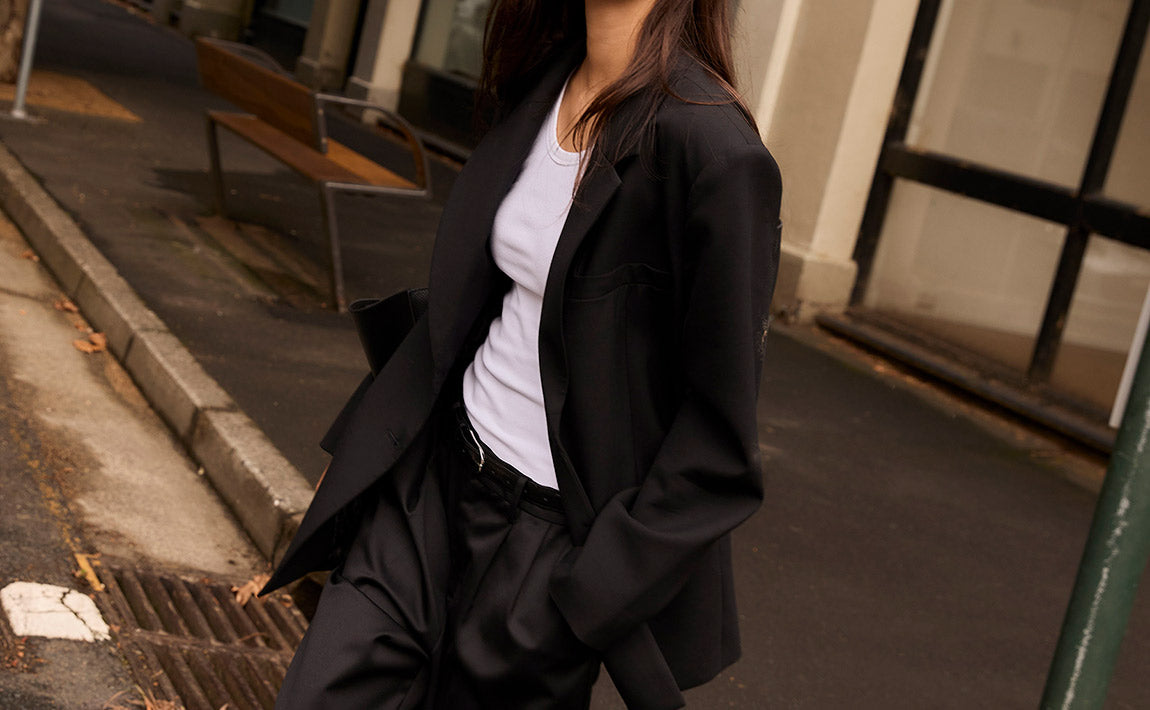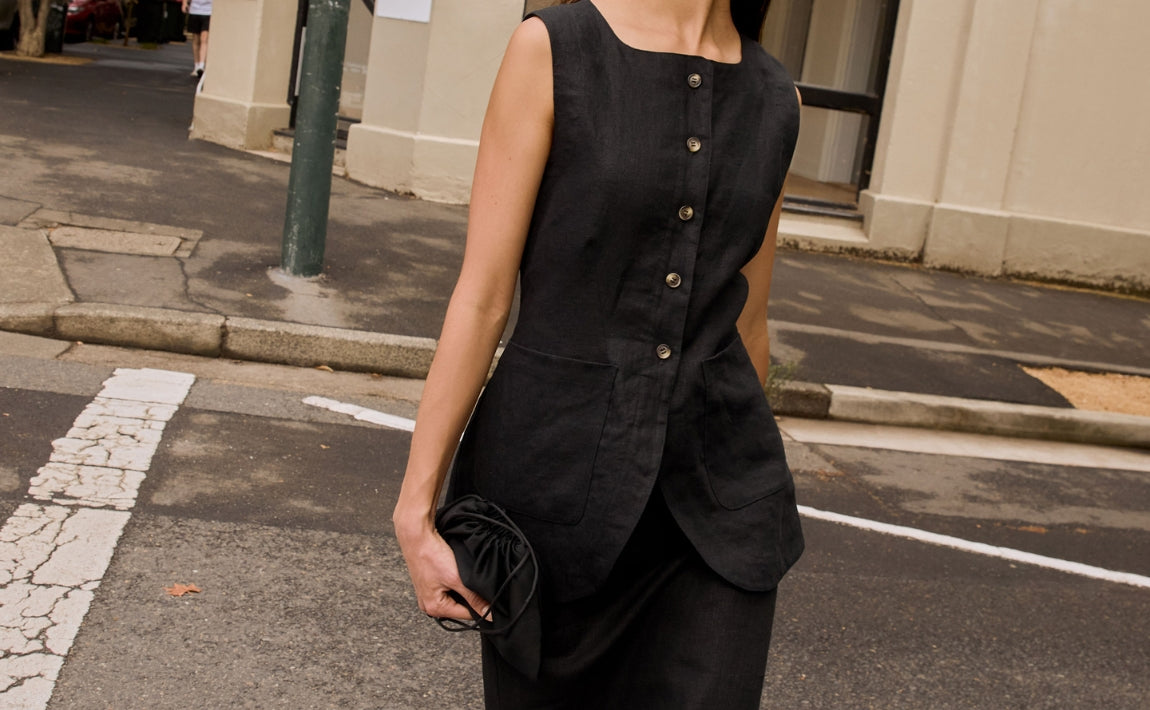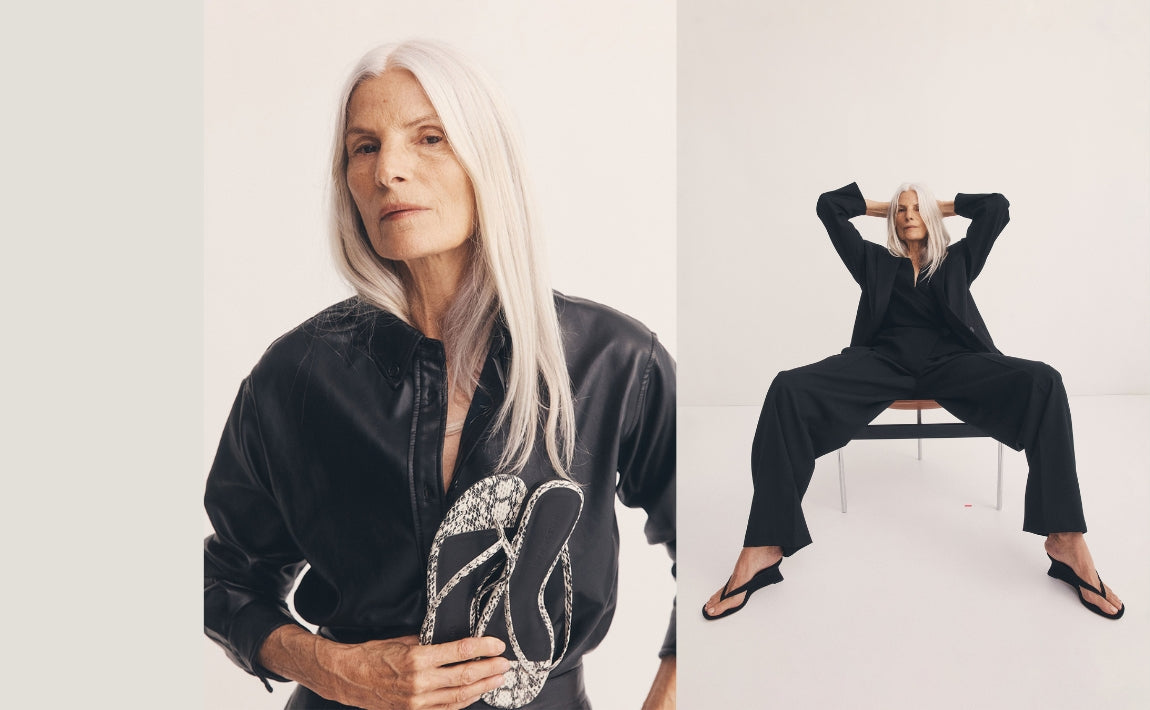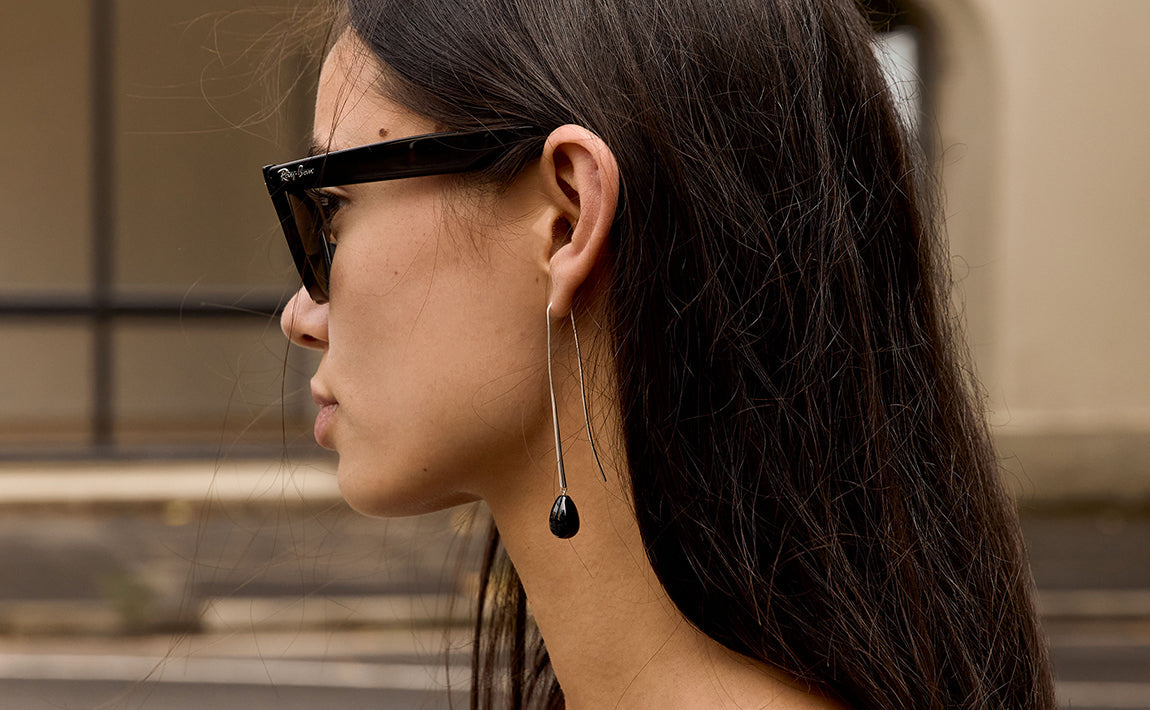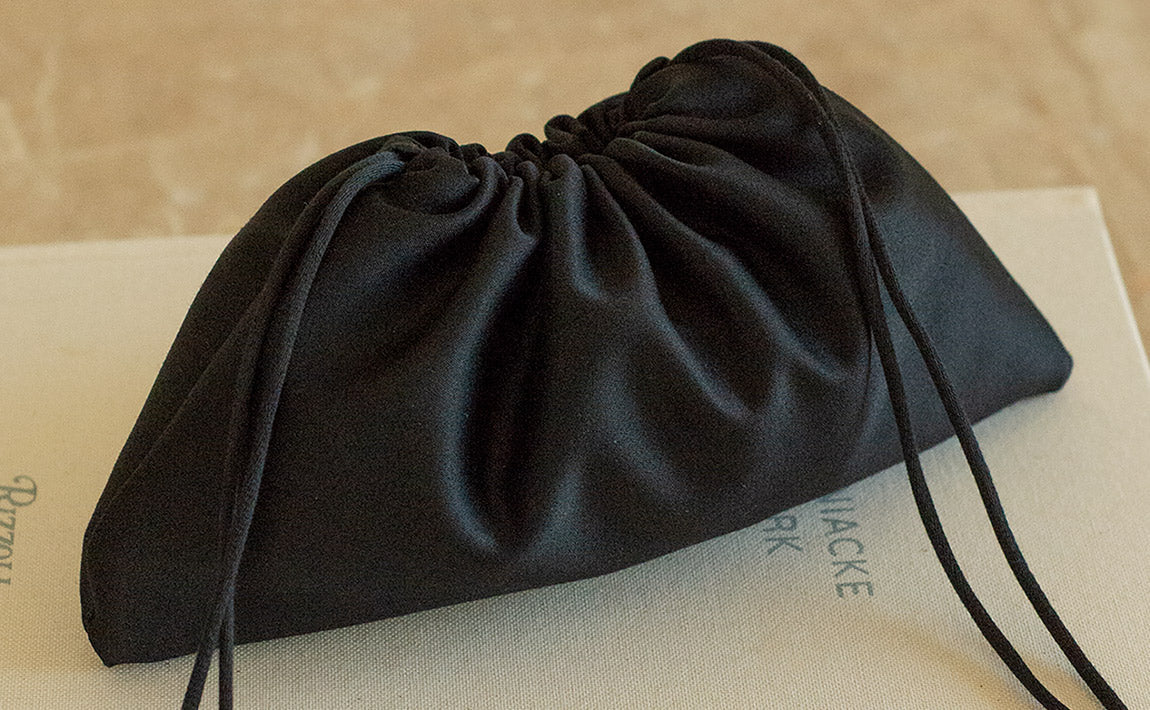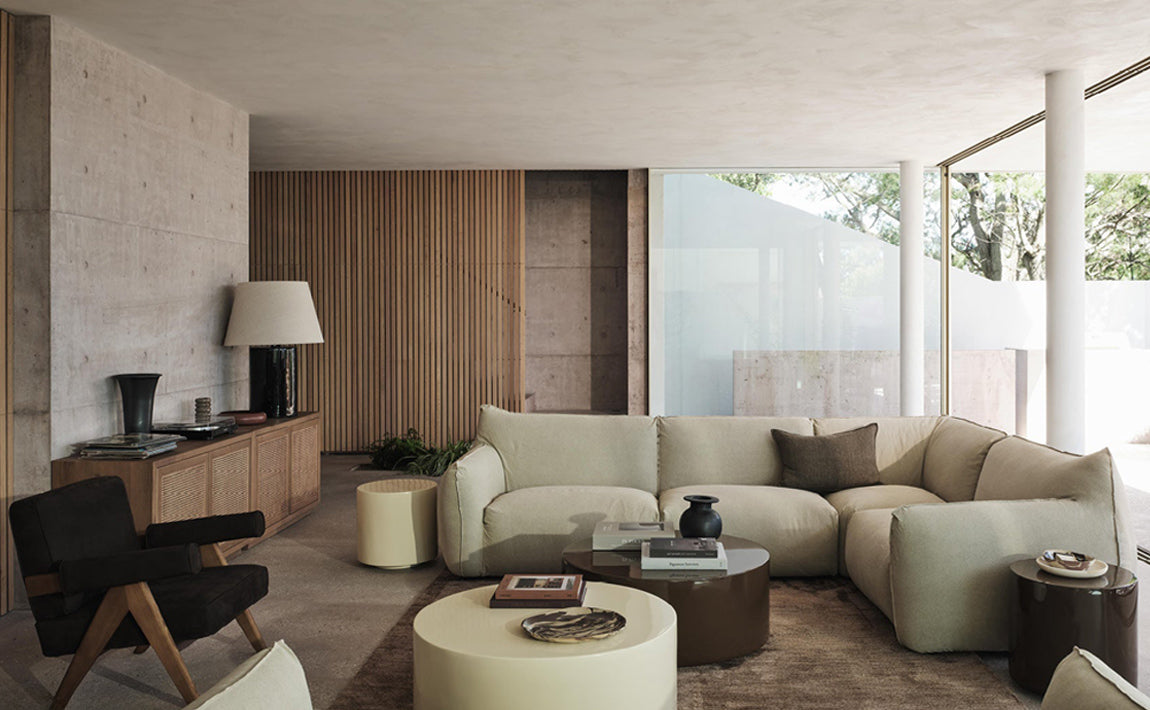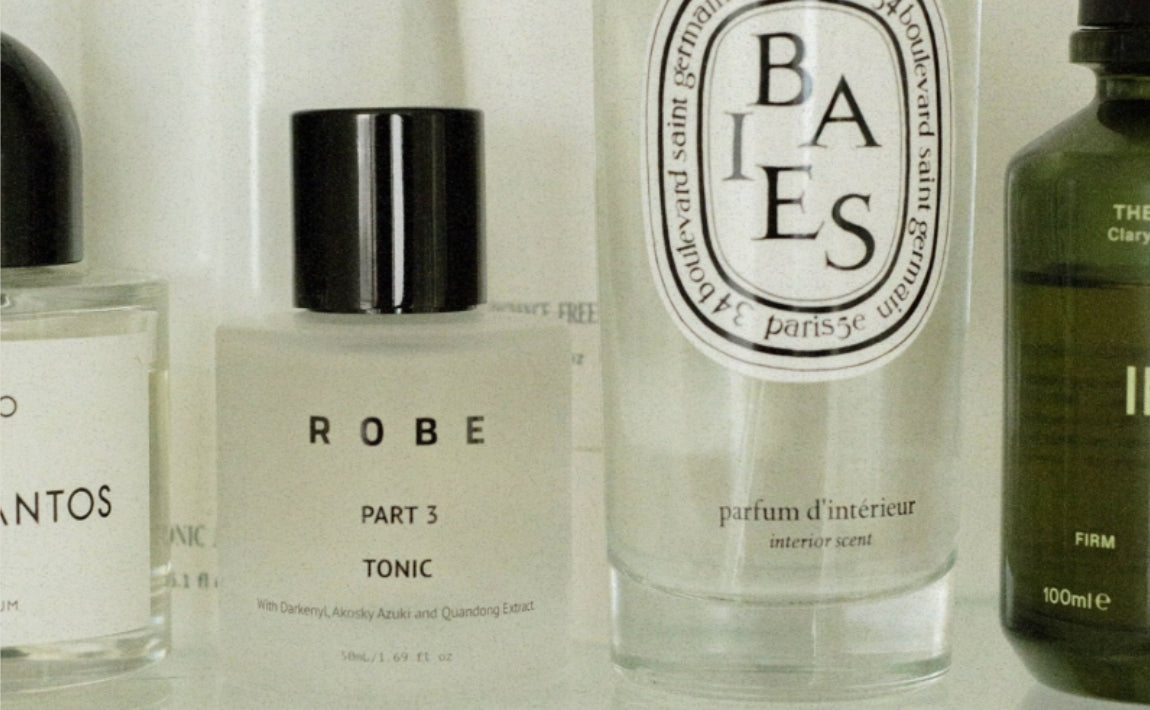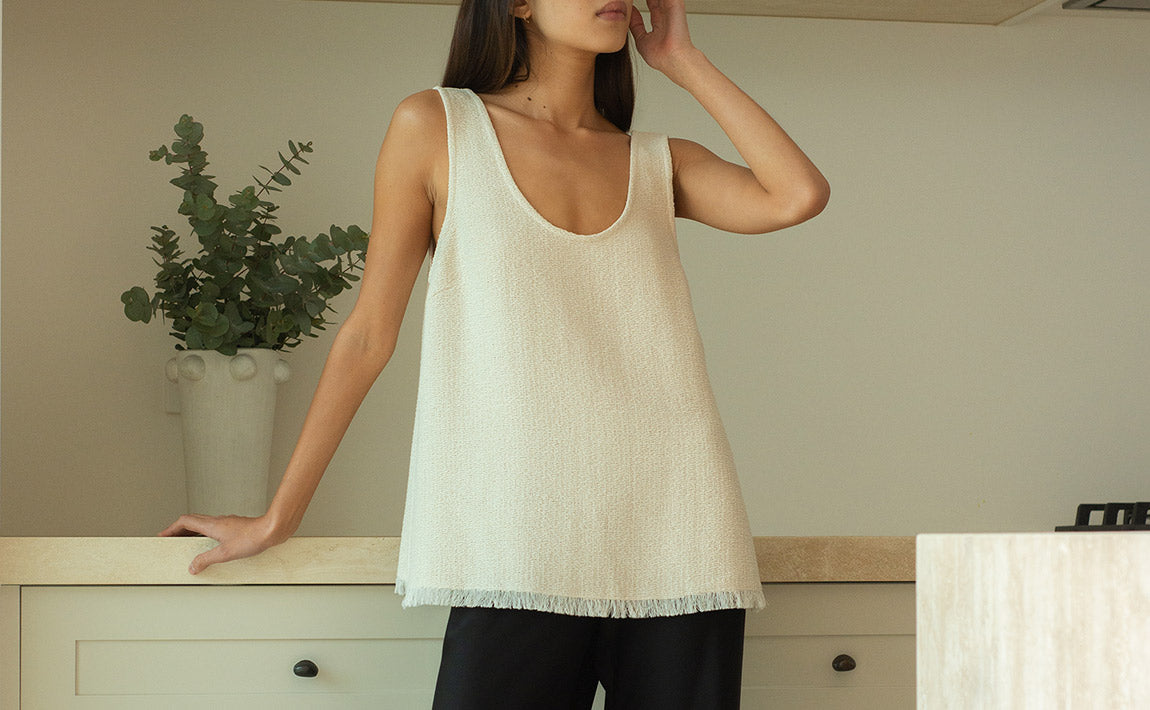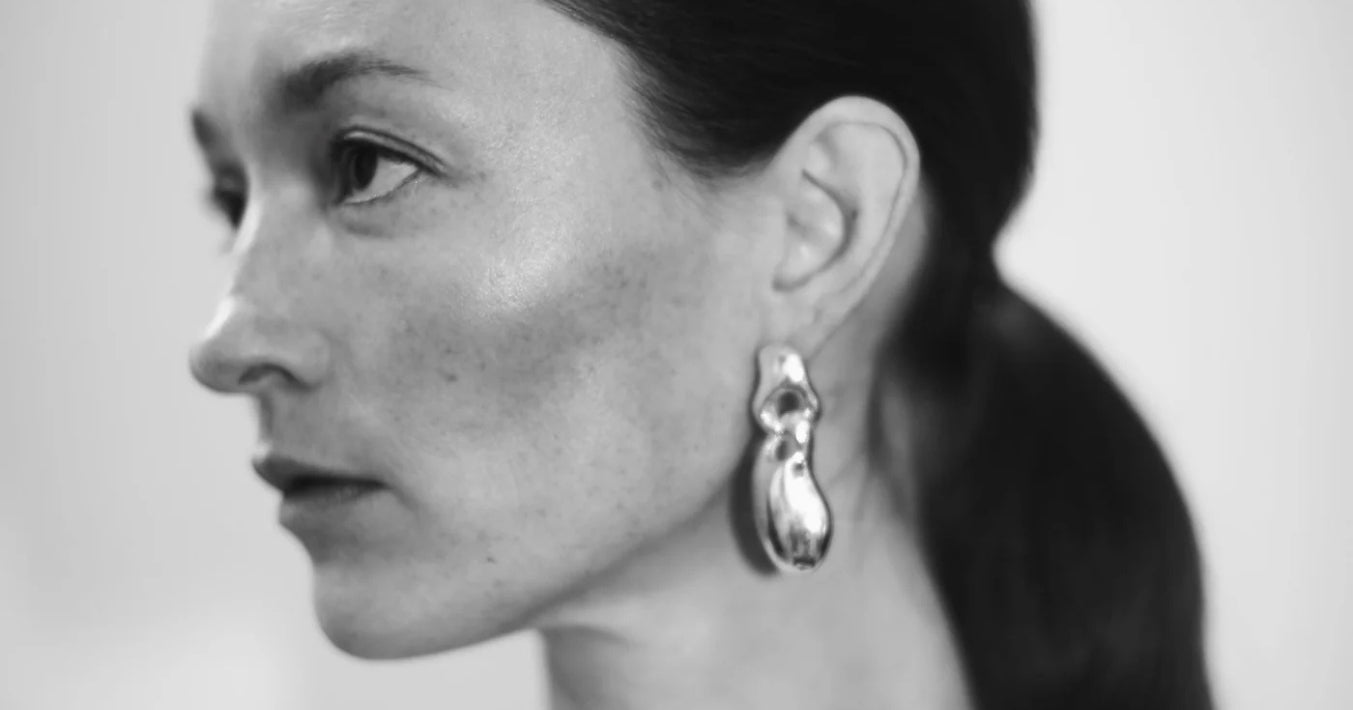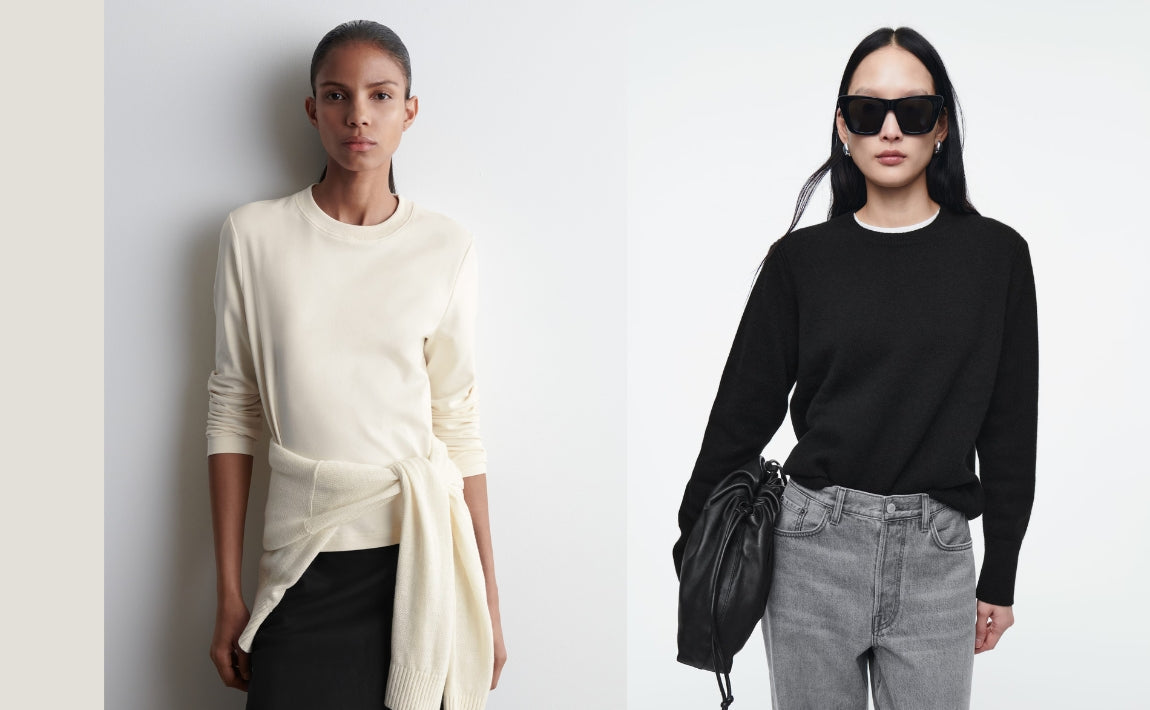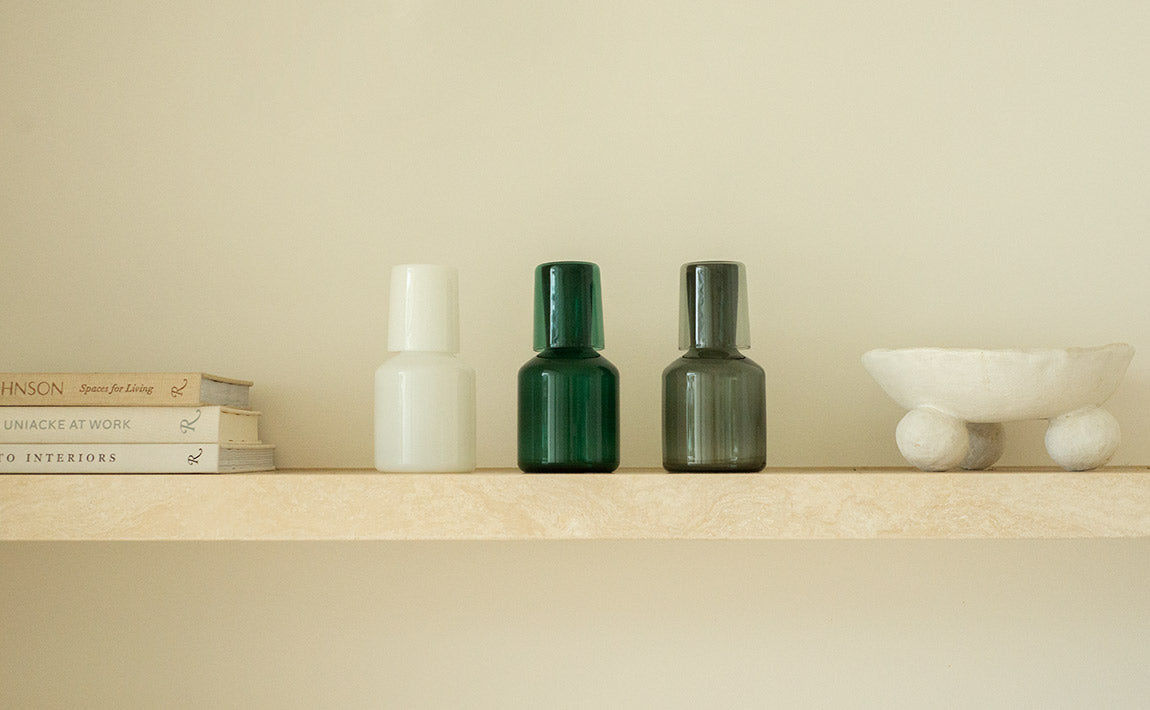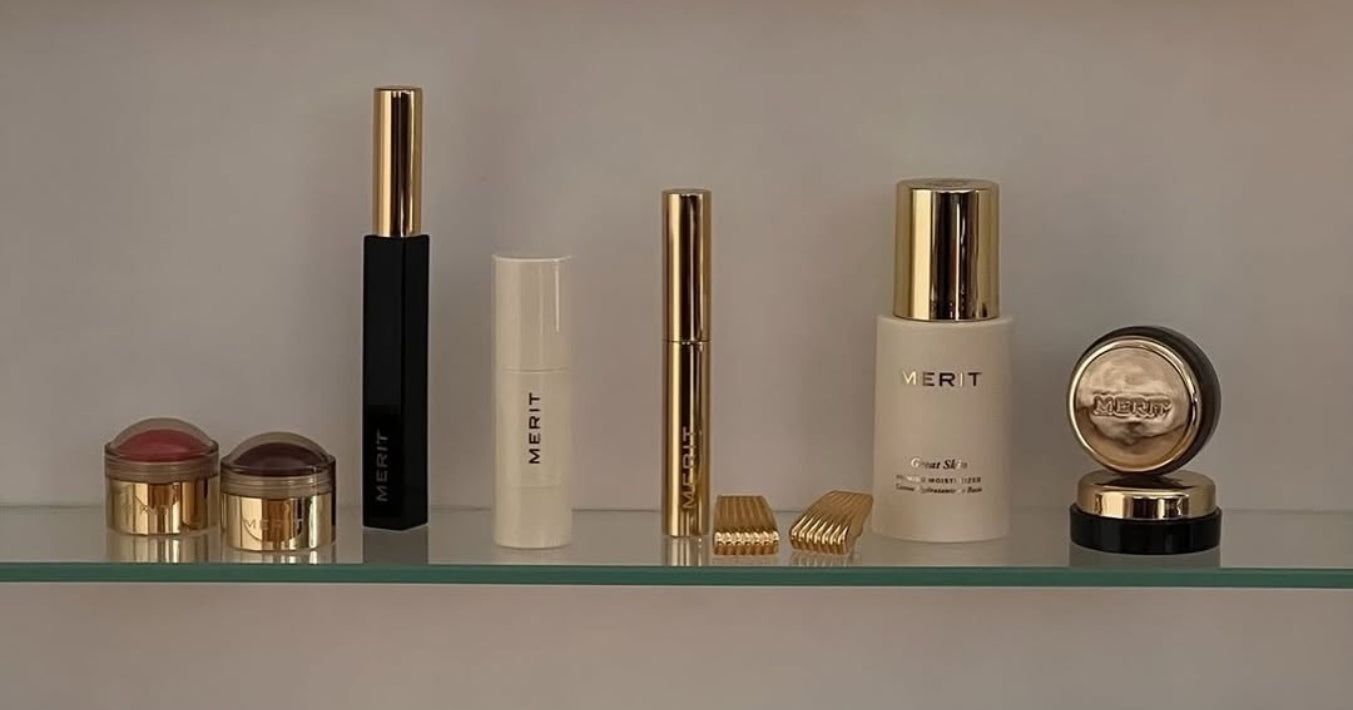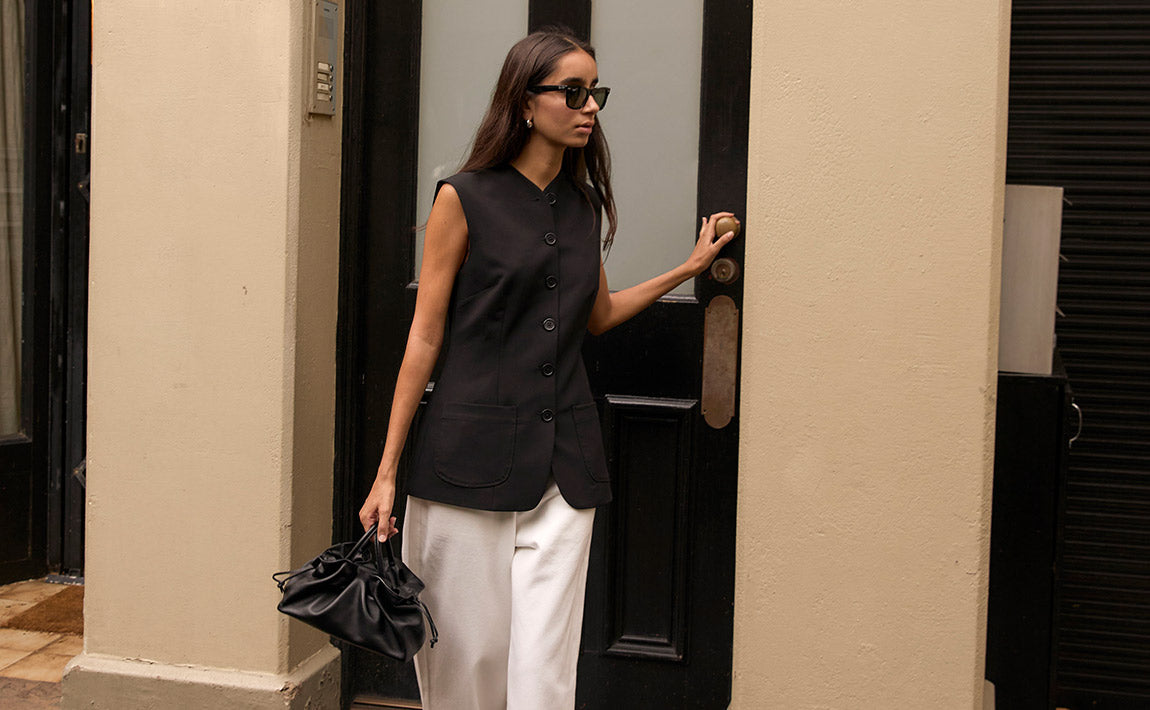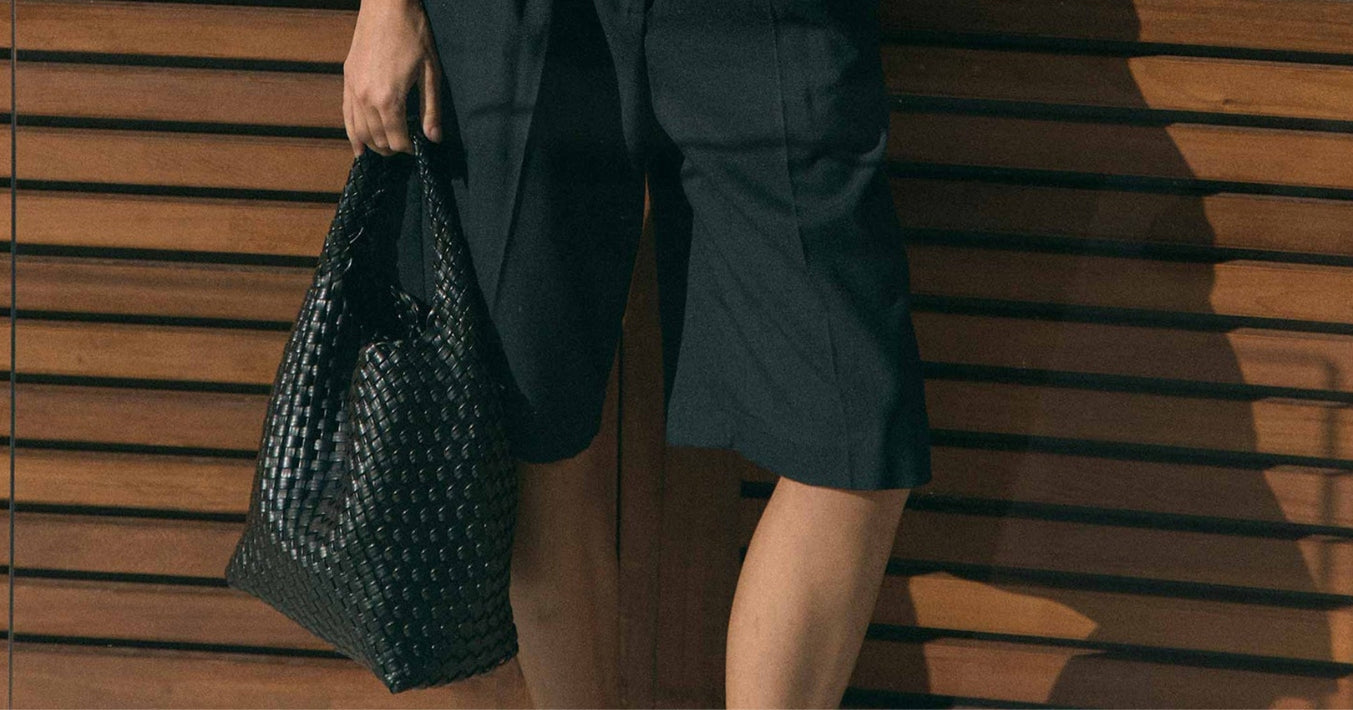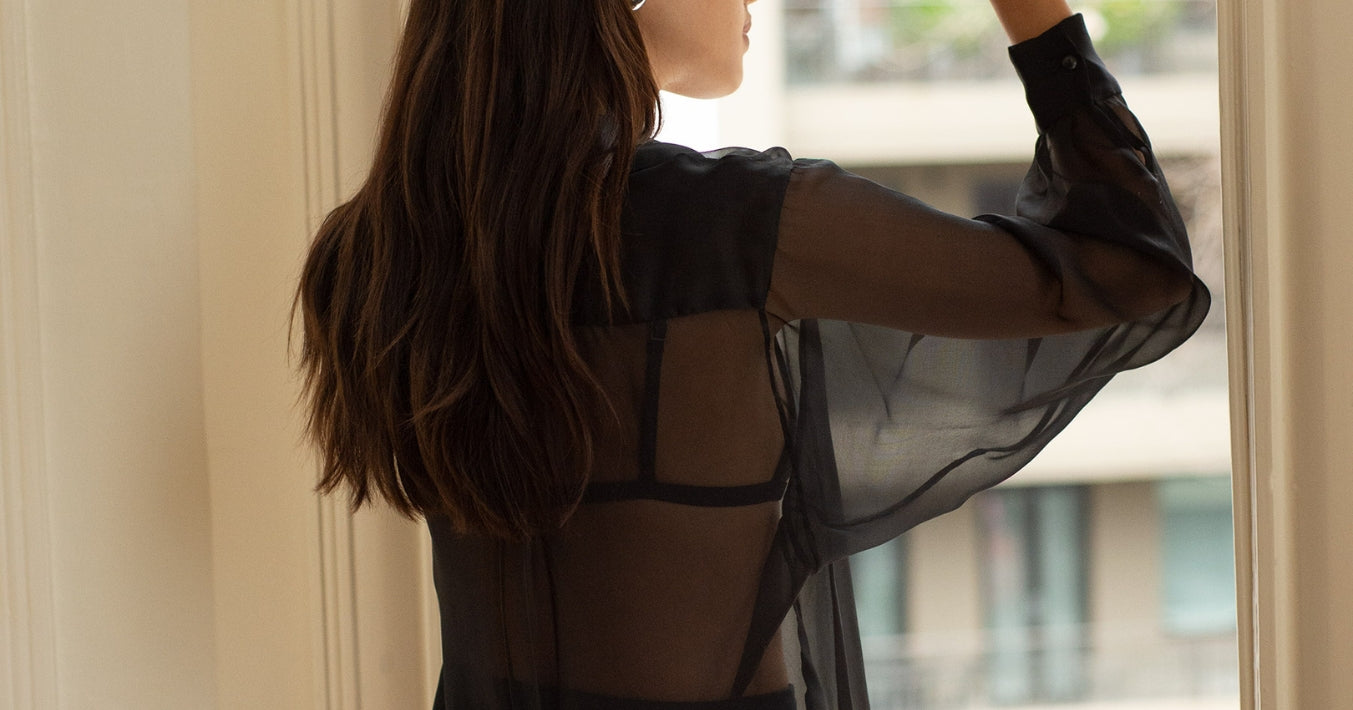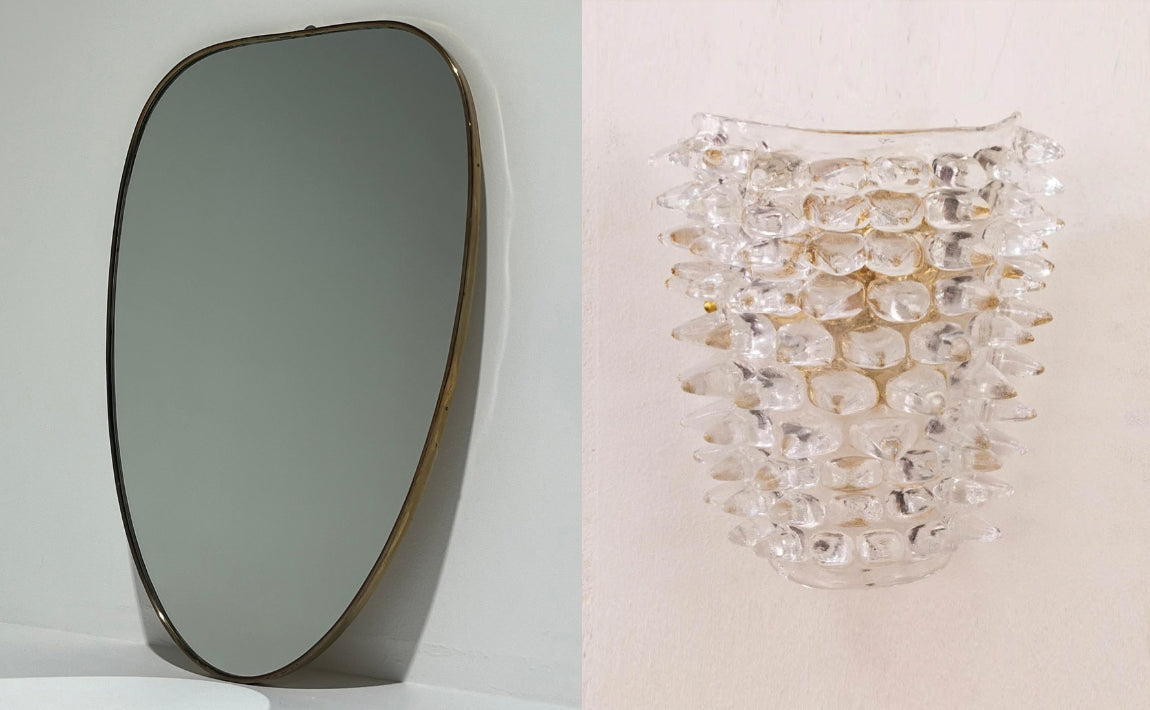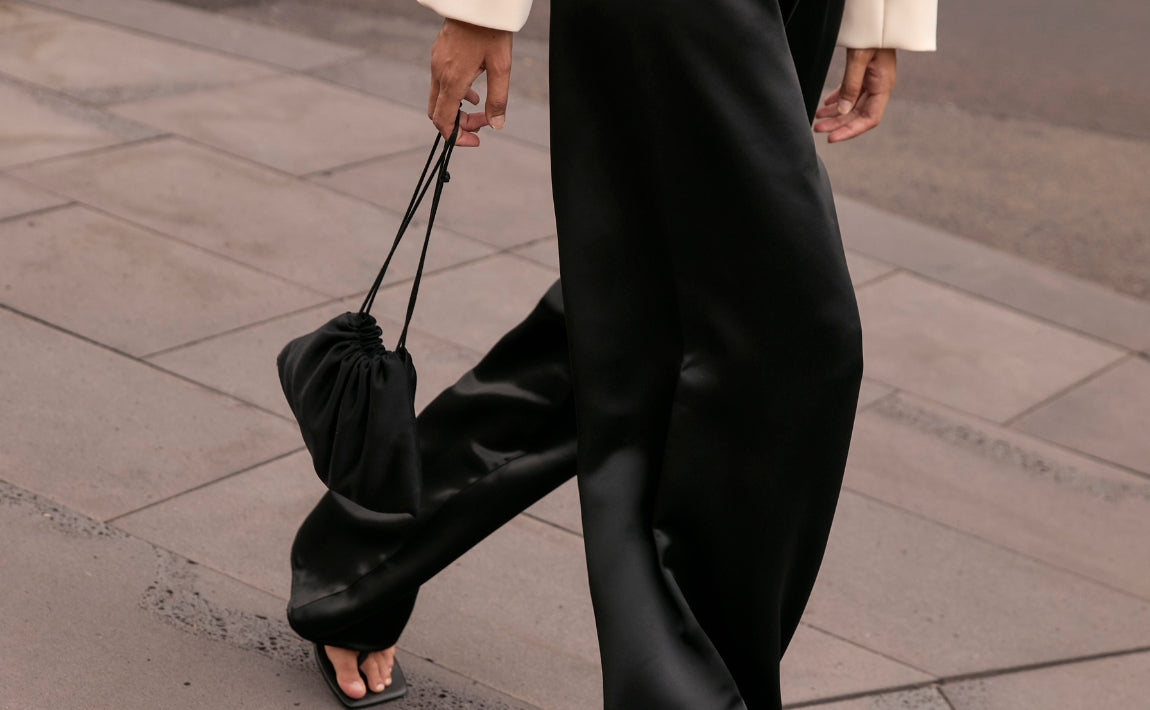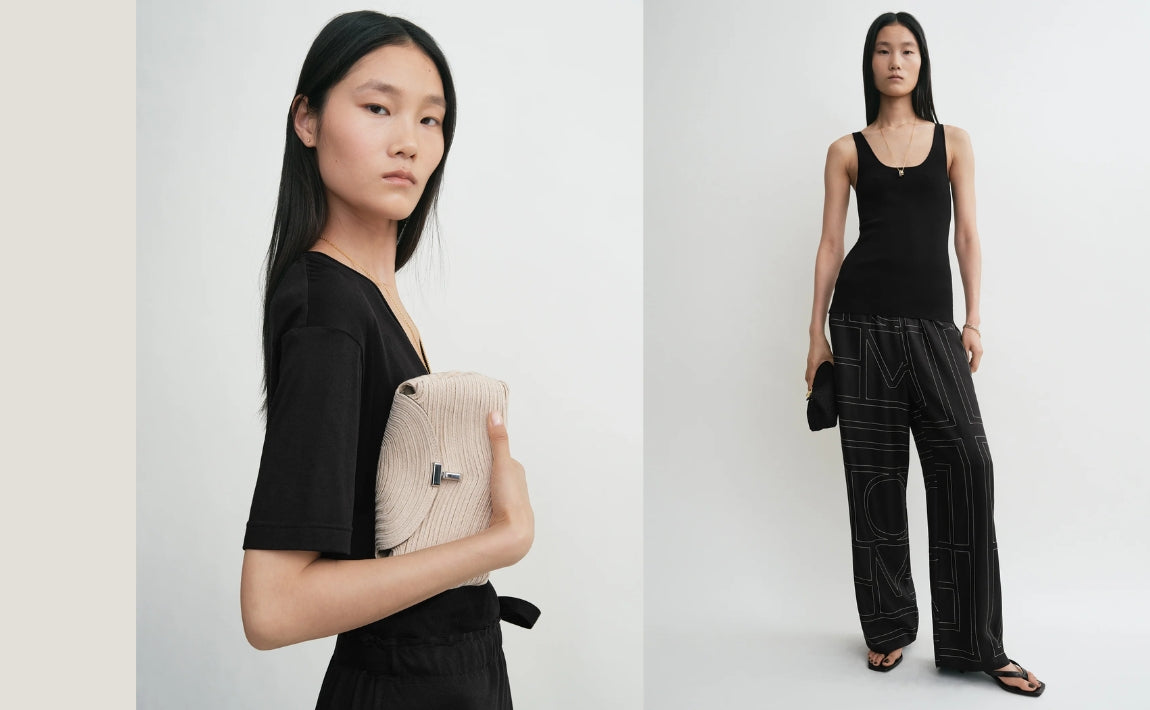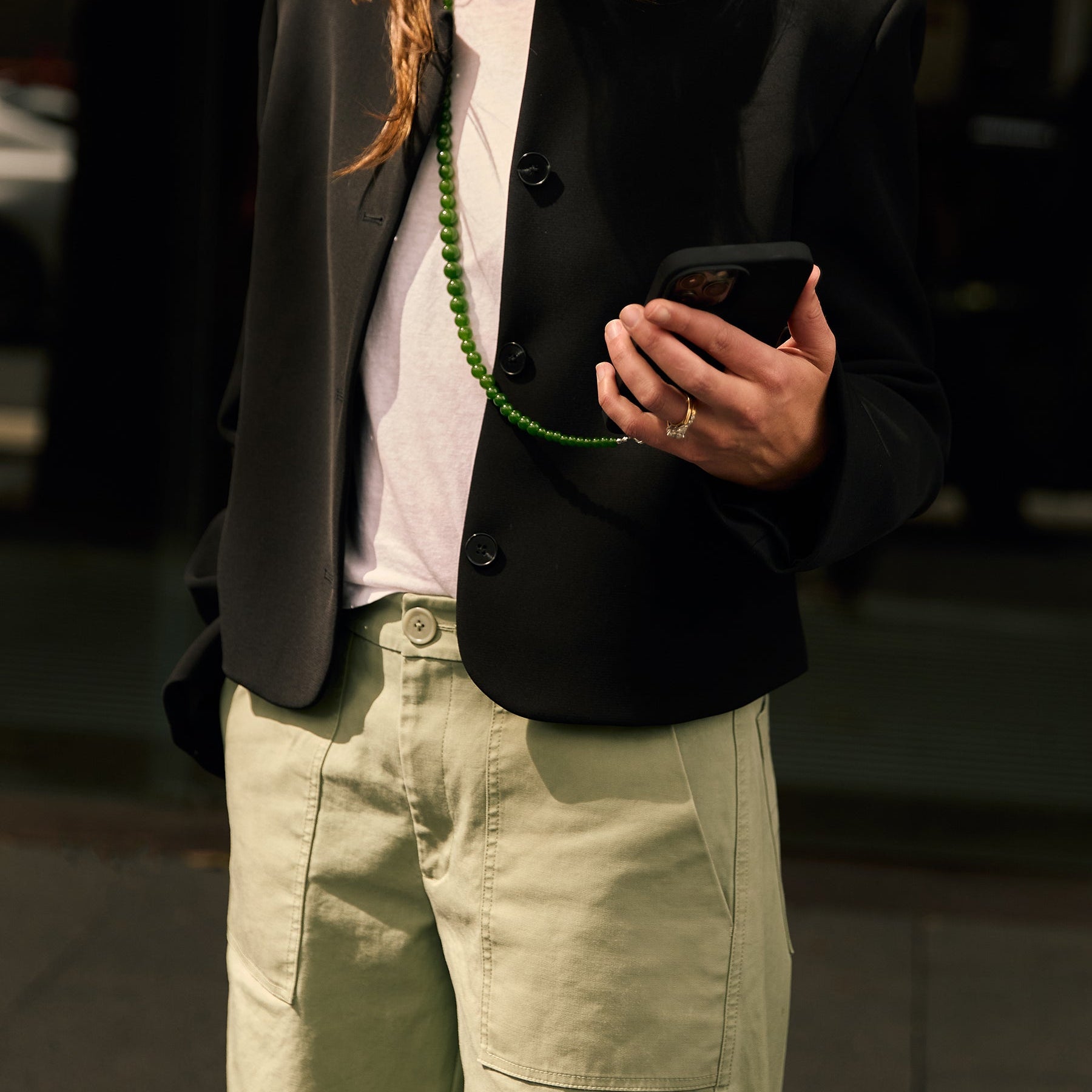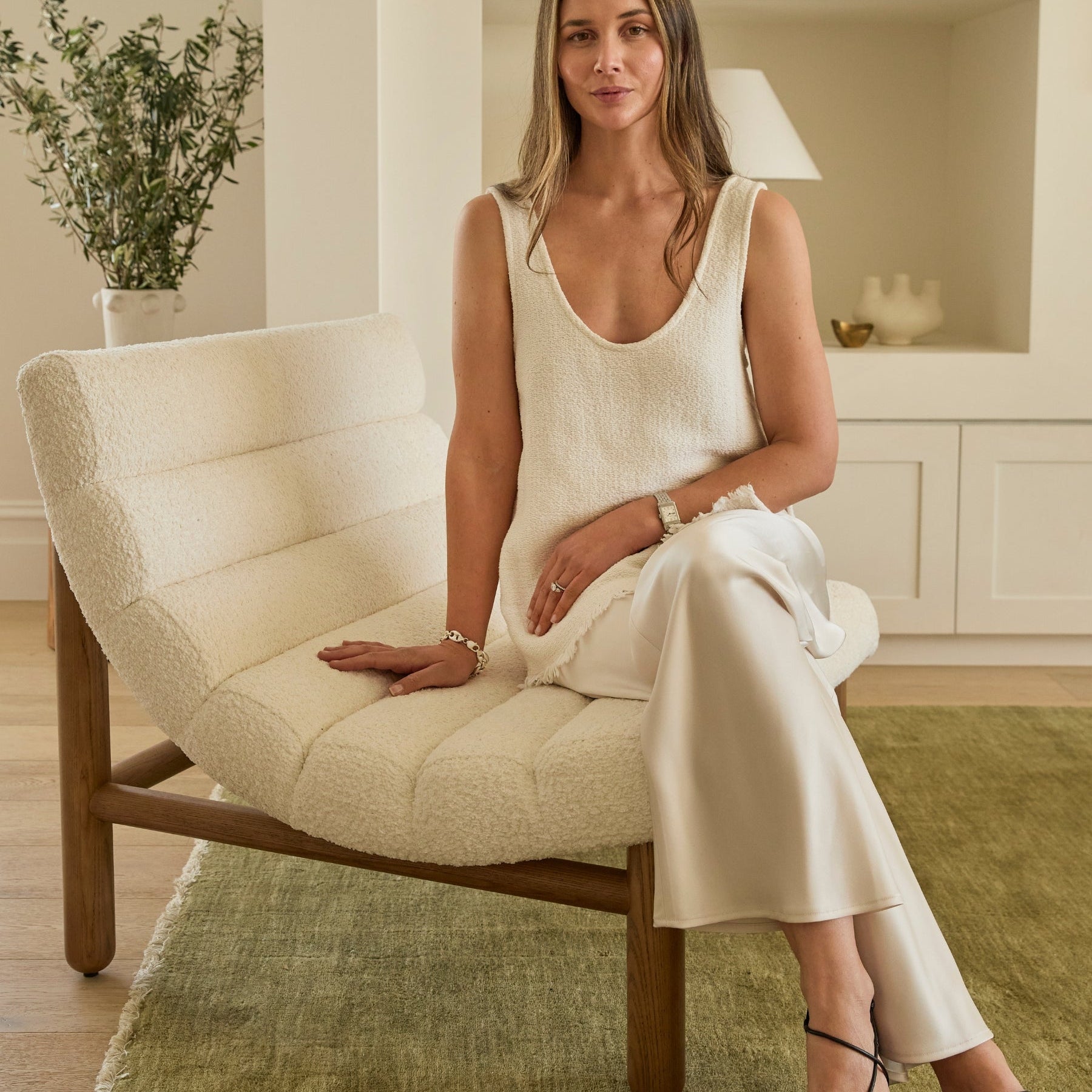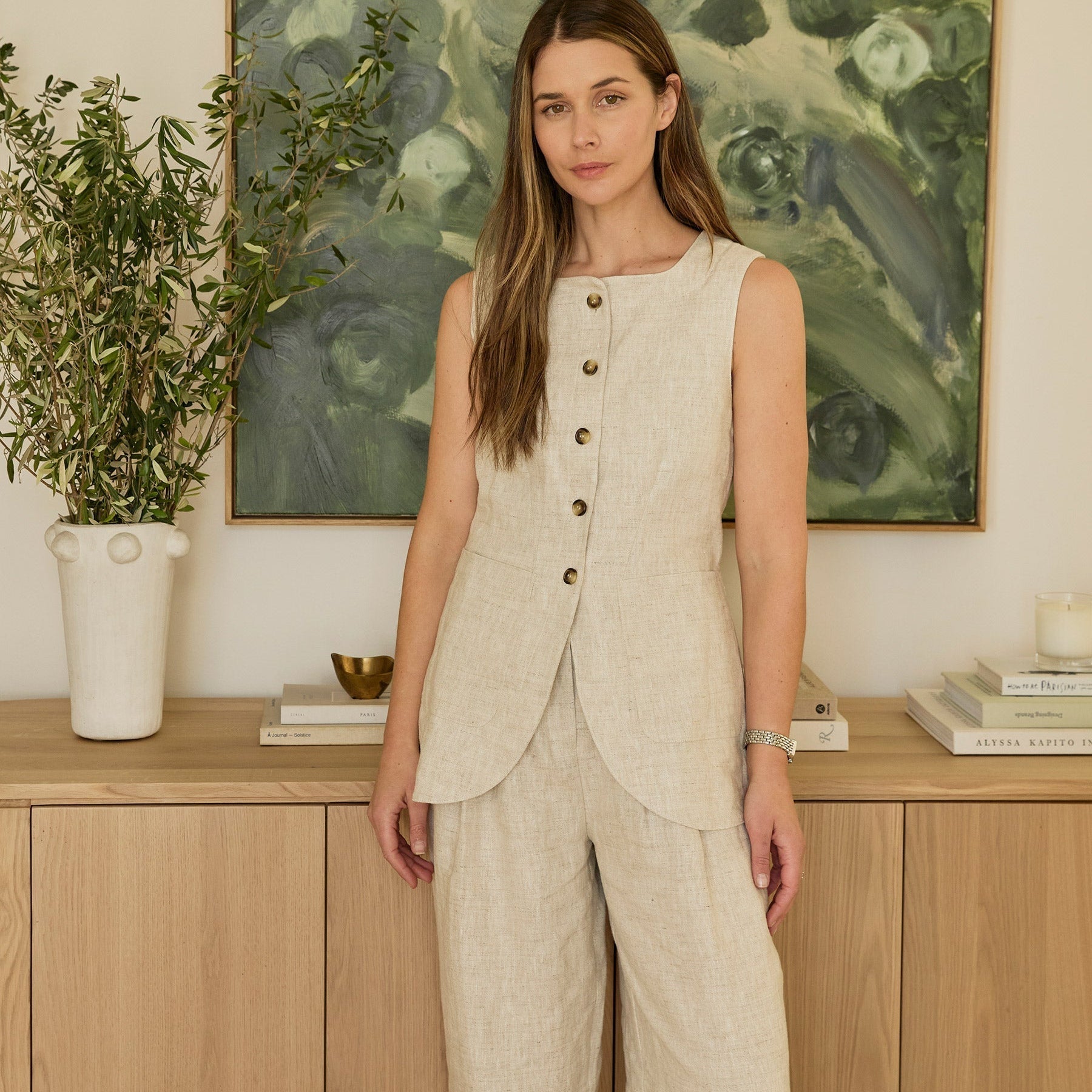Style Lessons: Applying Interior Design Principles to our Wardrobe
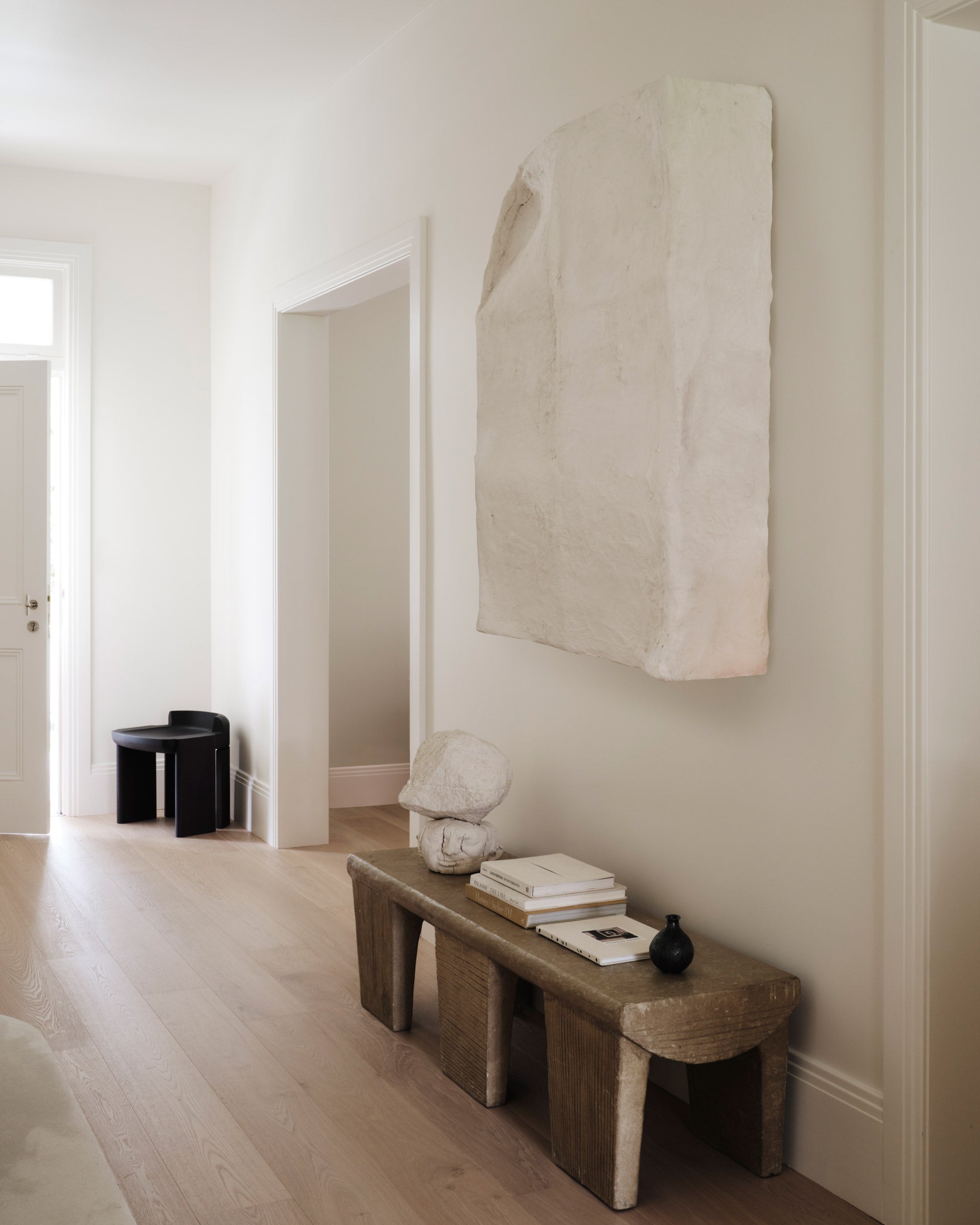
To the untrained eye, it may seem as though the worlds of fashion and interior design are very much siloed. But the truth is that the two disciples have been running parallel for quite some time, and have begun to become more intertwined than ever.
Particularly today, in a culture of hyper sharing and ultra transparency — where real-life and virtual friends alike give a window into their worlds — we see more and more the link between our personal style and our private spaces, and how we interchangeably borrow from both worlds and cross them over.
The more we think about this creative relationship, the more we realise that our own approach to interiors is much the same as our approach to fashion — we find ourselves gravitating to certain aesthetics. And ultimately, both fashion and interior design stem from your personal style, your cultural tastes and your immediate surrounds.
The connection is so strong, in fact, that fashion to interiors is becoming an increasingly popular professional pipeline, with brands not only extending their offering to homewares but also making a complete category shift. And the move makes sense — whether we’re ingrained in either field, or instead are outside observers with a keen eye for style in any form, we’re inevitably drawn to certain aesthetics and mirror our clothing to our own spaces (and vice versa).
And if designers aren’t crossing industries, they’re still weaving the other’s principles in their work. More and more, fashion labels have placed great importance on the look and feel of their customer-facing spaces, with interior design becoming an increasingly important element to a retail environment, complementing and elevating the brand on a holistic and experiential level.
When it comes to their individual outputs, the stark similarities between fashion and interior design continue to surface, particularly when it comes to trends. Inevitably, both fashion and interiors are drawn into the trend cycle to varying degrees, each taking heed to what’s popular in the zeitgeist.
Take the ‘touch of red’ dressing trend that dominated TikTok for much of last year, one which promised to add a point of interest to every look — earlier this year, it was the interiors world that looked to crimson and scarlet hues when Brooklyn-based interior designer Taylor Migliazzo Simon offered up her ‘Unexpected Red Theory’ which declared that adding a piece of red decor to any room, no matter your interiors style or colour palette, instantly makes it look better.
Similarly, the rise of cool metals in interior design — silver and chrome touches were declared one of the biggest homewares trends of 2024 — has correlated to the revival of silver jewellery after gold’s long-time dominance. And its influence continues to be seen, with silver set to dominate as one of the biggest footwear trends come Australian summer.
Those links made, it’s important to note that while fashion’s trend cycle has maintained its breakneck speed for some time now, domineering not only our purchasing behaviours but influencing the designs of brands intent on capitalising on consumers’ tastes, the world of interior design is a little more immune to passing trends. Rather than focusing on individual pieces or the next best thing, interiors are far more holistic, focusing on an overarching theme or vibe, or on textures and colourways. And if specific points of inspiration are called on, they’re often archival. Interiors should remain timeless given the relatively slower transitions your spaces make when compared to your wardrobe.
So, for those trying to write, or rewrite their dressing rules, it may be time to look outward — to your living spaces. After all, the most captivating interiors and enduring wardrobes both start with good foundations.
Sharing their key principles for both designing and dressing, we leaned on four interior designers for their best advice when it comes to defining your style (both personal and home), identifying what you naturally gravitate towards, and how to acquire your next perfect piece.
Note down the words that best speak to your style
Interiors by Handelsmann and Khaw
As Allison Bornstein has done for style with her signature ‘three word method’, those in the interiors industry have long been distilling their aesthetic approaches into key words or phrases.
For Sydney-based Interior Architect, Phoebe Nicol, her design style is characterised by “a harmonious blend of timeless elegance and understated luxury”. “I strive to create spaces that exude tranquillity and refinement… that evoke a sense of serenity and sophistication. Each room is a testament to balance and proportion, where simplicity is elevated through meticulous attention to detail.” Interior Designer Brahman Perera too has his own guiding words, with ‘textural finishes’, ‘striking colour’ and ‘meaningful objects’ coming up alongside ‘balanced’ and ‘distinctive’.
Tania Handelsmann and Gillian Khaw — co-founders of the eponymous Sydney interior design studio Handelsmann + Khaw — their aesthetic approach is clear: “Understated, enduring, tonal, with a love of different periods, not just what is current.”
Take a moment to look at your surroundings, and what they’re telling you about your tastes, and try to narrow it all down to a few broader, easily applicable words.
Mimic the look and feel of your interiors to what you wear
Gillian Khaw in her home designed by Handelsmann and Khaw
You’ll find that those interior designers that have a clear vision for their professional and personal design approaches will similarly have a distinct dress sense that often reflects that very same interiors style — and you can do the same!
“I have always been drawn to neutral tones and palettes and this is reflective in my personal style as well as my interiors,” shares Nicol. Perera too treats his wardrobe in a very similar way to his spaces: “I am drawn to garments with a sculptural tactility, and with a strong appreciation of a fabric’s quality and form. I seek out silhouettes that have a sensorial and emotive resonance with myself… Raw silk skirts with a herringbone stitch, or cargo pants: the way I dress myself is a variable assemblage of my mood and purpose!”
Carefully consider pieces — their quality, longevity, and suitability to you — before adding them to your wardrobe
Interiors by Phoebe Nicol
A slow approach is one we’ve long adopted, and too respected by interior designers in all they produce, personally and professionally. Actually thinking about what we purchase and put on ourselves or in our space is an attitude shared by the best in the interiors world.
“The best advice I could give when it comes to collecting is patience… to collect pieces that are meaningful to you is a process that takes time,” shared Perera, adding that “there is no ‘quick fix’ for a collection that is sentimental” and that your home, like your wardrobe, “should develop as an expression of your growth and lived experiences.”
For Perera personally, It’s important to grow a collection of pieces that are deeply meaningful to his experiences and represent who he is. “When purchasing clothing, I look for locally designed or made pieces that have a classic form of tailoring, that I know will be long lasting.”
Not only are these creatives considered with their pieces, they also look to pieces that have proven longevity, that have long existed, will continue to exist, and come imbued with experience. In her work, Nicol ensures that every element speaks of “quality craftsmanship and thoughtful curation”, calling on bespoke, finely-crafted and vintage pieces imbued with history to reflect the purest form of one’s personal style.
Handelsmann and Khaw also often work custom and vintage pieces into their projects, trawling Australia and the globe for the best possible objects — it’s an approach Handelsmann adopts when searching for garments: “Not unlike shopping for vintage furnishings, I spend a lot of time searching online before making a selection. I try to select classic, high quality wardrobe basics such as jeans, t-shirts and a great winter coat that I know I will wear on repeat and then am more fun and adventurous with shoes and jewellery.”
Mix the classic and the existing with the new and experimental

Henne Store, Paddington - by Brahman Perera
If there’s one thing those in interiors will tell you about creating a unique and timeless space that’s reflective of the true you, it’s to work with pieces you already have, and only seek newness when it will complement and amplify your existing collection.
When Nicol designs a space, she ensures she’s creating a “harmonious integration of old and new” to add depth, character and enhance overall elegance. “Whether it's a bespoke furniture piece crafted by a skilled artisan or an antique piece imbued with history, our selections speak to a narrative of elegance, functionality, and personal style. We believe in creating spaces that are not only visually stunning but also deeply reflective of our clients lifestyles and aspirations.” It’s an attitude that can be just as easily translated to our dressing habits.
Handelsmann and Khaw too start with a foundation of classics — “when designing a space or forming an outfit, I like to start with classic pieces in a muted natural palette and finish with more playful and surprising accents,” shares Handelsmann herself — an approach shared by Khaw to bring a point of interest, either to a room or an outfit. “We are always looking for fresh and unique pieces that will offer a moment of surprise and delight within a space.”
Layering and adding textures can make a world of difference
Interiors by Phoebe Nicol
Even if you’re not one to experiment with colour to add depth to a look, the same impact can be achieved through layering and adding textures to an outfit.
As Nicol explains, adding materials with varying finishes, hues and detailing can “add texture, [character], and depth to the space, enhancing its tactile appeal.”
For Perera, this approach — “combining and layering textural finishes, striking colour and objects that have specific meaning” and “encompass[ing] materials that are both complimentary but also juxtaposing” — brings a balanced and distinctive outcome. It’s one he himself uses when dressing for the everyday, embracing a sculptural element and layering different textures.
Focus on pieces that serve you and your life
Dissh Store, Bondi - by Brahman Perera
Just as important as a space that functions properly for you and your loved ones is a wardrobe that is ready to take you from day to night, from work to event. “I love classic garments that have an easability and can take me from the office, to dinner, and cover various mothering activities,” explains Nicol, adding that “a great blazer can uplift any outfit and will always be a go-to staple in my wardrobe.”
Spatial planning is a key part of Perera’s design process, considering how a space “operates and facilitates its user”. While this may seem a factor that’s not applicable to what we wear, the thoughtfulness translates: “[Dressing is] not that dissimilar to how I design a space,” Perera explains, adding that every outfit starts with identifying the purpose of his day.
You don’t have to avoid trends — sometimes it’s hard to — but be mindful about where your inspiration is stemming from

Brahman Perera in the Henne Paddington store
As Brahman points out, “trends are such finite things that come and go”, so we need to be mindful about what we’re consuming and why. Do we genuinely want and love a piece? Or are we just experiencing the pull of yet a viral item.
If it’s the former, there’s certainly room for trends within your wardrobe. “I am happy to be inspired by Instagram with fashion. I'll save it and if I still like it in a couple of weeks or months, then it gets bought, explains Khaw.” As she and Handelsmann put it, neither fashion or interiors are immune to trends, and that “in reality, so few of us can claim inspiration outside of social media, no matter how much we try to block out the noise of whatever is trending.”
A helpful tool when identifying whether or not a trend is suitable to you, and if it has longevity within your wardrobe, is to get to its roots: “We think the OG inspiration for both fashion and creatives comes from history: certainly in interiors if it's been out for long enough it's ready for a comeback,” they both explain. If it’s been around, it will often come back around again and again. If not, it may not be worth your investment. “I think the interior equivalent of the branded handbag of the moment might be the "feature chair" that people might have seen at the Milan furniture fair… which is not my style,” says Khaw, identifying the difference between trends and fads.
Whatever you invest in, across the home and wardrobe, Handelsmann and Khaw remind us that that "if it's been out for long enough it's ready for a comeback."

